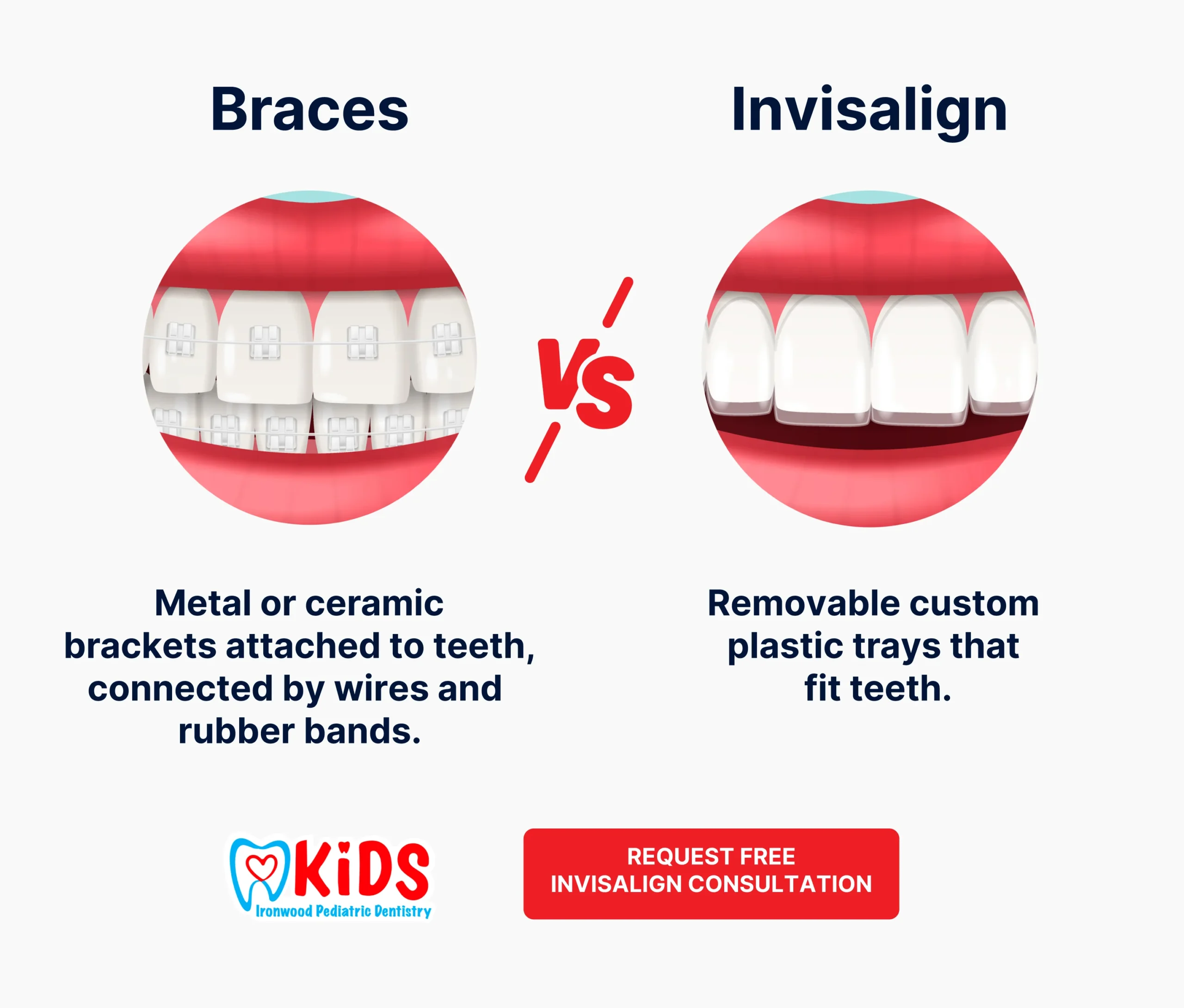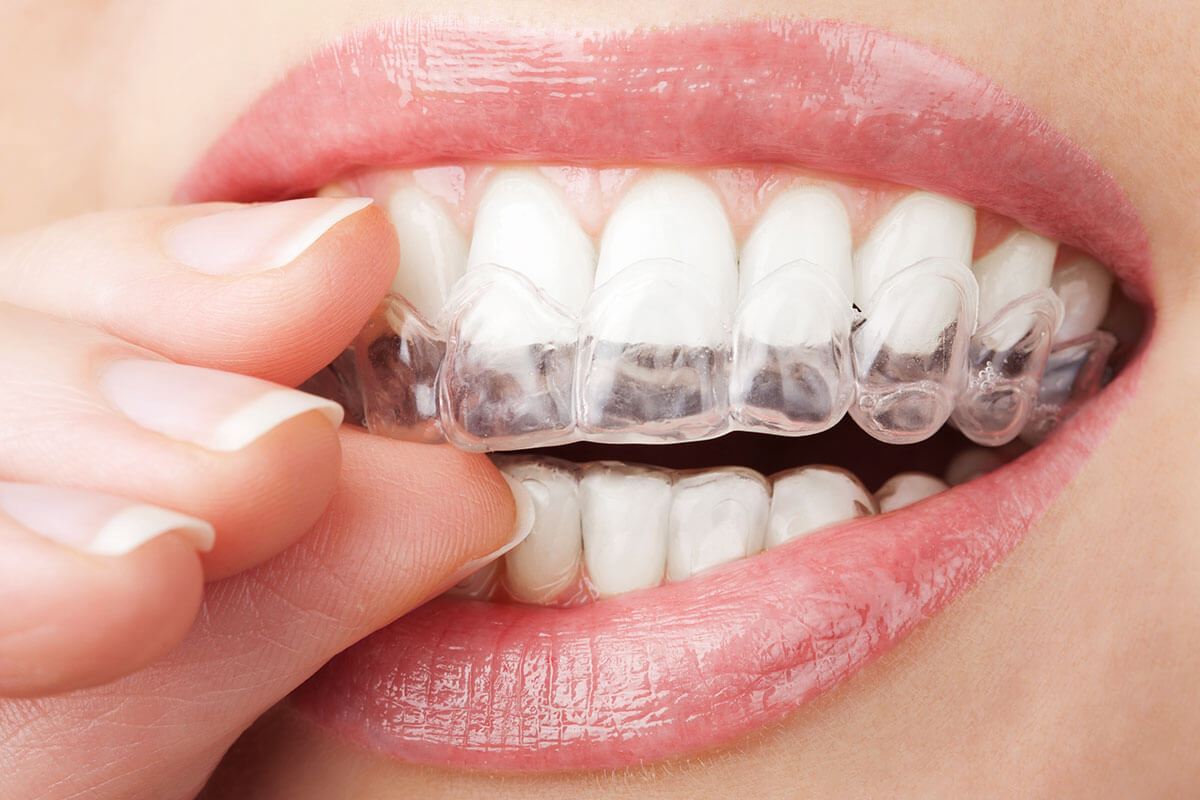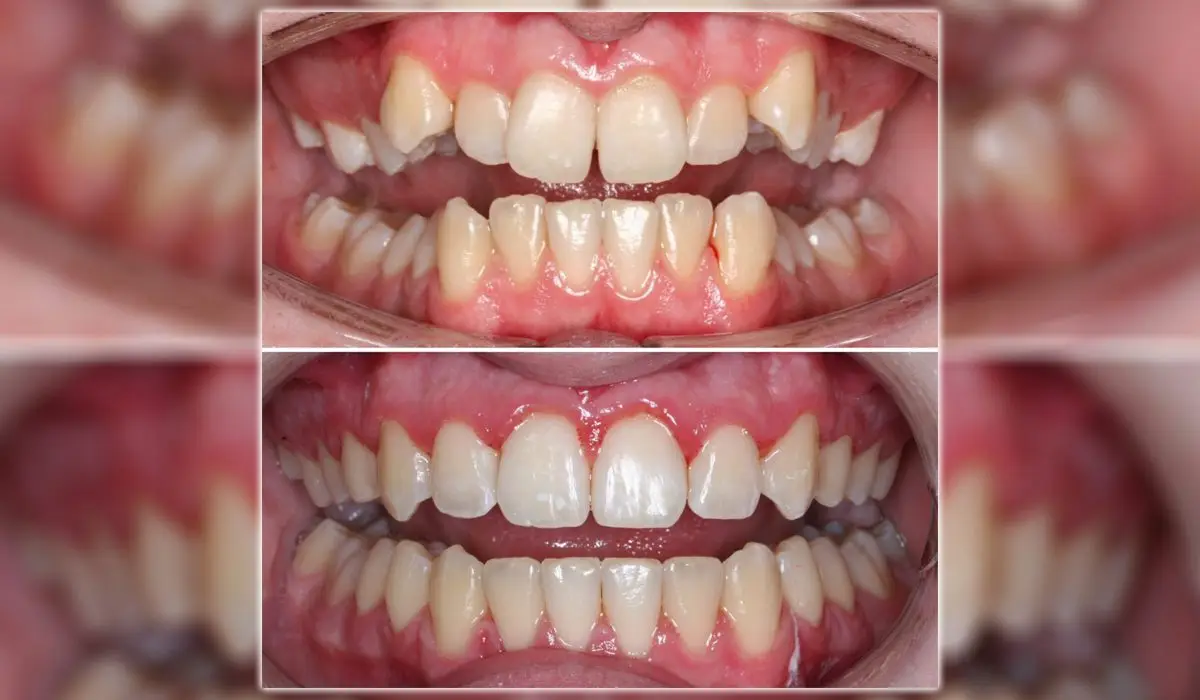Discover the Perks of Invisalign for a Perfect Smile Change
Discover the Perks of Invisalign for a Perfect Smile Change
Blog Article
Invisalign vs. Traditional Dental braces: Which Option Is Right for You?
When considering orthodontic therapy, the option between Invisalign and typical dental braces presents a number of vital variables that warrant careful assessment. Invisalign uses a very discreet alternative with removable aligners, while standard braces provide a much more visible yet efficient service for extreme misalignment. Each choice encompasses unique advantages and downsides connected to aesthetics, convenience, therapy period, and price. Understanding these subtleties is important for making an informed decision that straightens with your personal choices and way of life. The question continues to be: which choice will ideal satisfy your orthodontic demands and assumptions?
Summary of Treatment Alternatives

On the other hand, traditional dental braces contain steel braces and cords that are bonded to the teeth. This method applies continuous pressure in time to accomplish placement. While efficient for complex orthodontic issues, conventional dental braces call for normal sees for changes and can present difficulties in preserving oral hygiene due to the difficulty of cleaning around braces and cords.
Both options have their values, and the selection often rests on particular oral problems, way of living choices, and patient compliance. Ultimately, seeking advice from an orthodontic specialist is crucial for identifying the most appropriate therapy strategy customized to private needs. Understanding the nuances of each option can substantially affect the general success of orthodontic therapy.
Aesthetic Considerations
A substantial factor influencing the option in between Invisalign and traditional braces is the aesthetic allure each treatment provides. Invisalign aligners are crafted from clear plastic, making them virtually undetectable when put on.
In contrast, conventional braces contain steel brackets and cables, which can be a lot more recognizable. While advancements in orthodontic innovation have actually caused the advancement of smaller sized braces and tinted elastics, conventional braces still keep an even more conspicuous account. For some people, the presence of braces may hinder them from looking for required therapy.
Ultimately, the option between Invisalign and traditional dental braces might rest on personal preferences regarding appearances. Patients who prioritize discernment commonly favor Invisalign, while those that are much less worried regarding presence might choose typical braces. Recognizing the visual effects of each alternative is important for making an educated decision that aligns with one's way of living and preferences.
Convenience and Convenience

In terms of comfort, Invisalign aligners are removable, making it possible for people to appreciate their favorite foods without restriction and keep optimal oral health. Brushing and flossing are streamlined, as the aligners can be taken out throughout these routines, whereas typical braces need cautious maneuvering around brackets and cords.
In comparison, traditional braces necessitate normal adjustments, making them less hassle-free for those with hectic timetables. Overall, the comfort and ease of Invisalign make it an appealing selection for several individuals looking for orthodontic treatment.
Treatment Duration and Efficiency
While both Invisalign and conventional dental braces are efficient websites in dealing with dental imbalances, the period of therapy can differ significantly in between the two choices. Generally, Invisalign therapy can take anywhere from 12 to 18 months, depending upon the complexity of the situation. The clear aligners function by slowly changing teeth into their wanted placements, and regular follow-ups with an orthodontist aid ensure progression remains on course.
In contrast, standard dental braces often need a longer commitment, generally varying from 18 months to three years. This results from their set nature and the use of brackets and cables, which can be more reliable for intricate cases and extreme misalignments (Invisalign). The therapy effectiveness of traditional dental braces is well-documented, as they enable precise modifications and greater control over tooth motion
Eventually, the choice in between Invisalign and conventional dental braces may hinge on both the awaited treatment duration and the particular oral problems available. Consulting with an orthodontist is essential, as they can provide customized recommendations based on specific needs, making sure the chosen approach straightens with wanted end results and durations.
Price Contrast and Insurance Policy Choices
Cost plays a significant role in the decision-making process for individuals considering orthodontic treatment, whether choosing Invisalign or standard braces. Typically, the expense of Invisalign arrays from $3,000 to $8,000, while traditional dental braces usually set you back between $2,000 and $6,000. Elements influencing these expenses include the complexity of the instance, the period of treatment, and geographical place.
Lots of oral insurance plans provide partial coverage for orthodontic therapies, yet the specifics can differ extensively. Usually, conventional dental braces may be more regularly covered by insurance plans contrasted to Invisalign, which some insurers classify as an aesthetic treatment.
Additionally, several orthodontic methods supply versatile layaway plan, making both treatment options more easily accessible. Clients ought to inquire about possible financing choices and discounts for ahead of time payments. Reviewing the overall price, consisting of insurance policy benefits and layaway plan, is crucial for making an informed decision that aligns with both aesthetic choices and budget factors to consider.

Conclusion
In recap, the option in between Invisalign and standard braces hinges on several aspects, including visual choices, comfort, treatment duration, and cost. Invisalign supplies a very discreet, removable choice that facilitates dental hygiene and dietary flexibility, while conventional braces might be Bonuses more suitable for intricate oral issues and commonly come with a lower cost factor. Eventually, assessment with an orthodontist is necessary to evaluate specific circumstances visit this site and determine the most suitable treatment choice for achieving optimal oral alignment.
When taking into consideration orthodontic therapy, the choice between Invisalign and traditional braces provides several essential variables that merit cautious examination.Comparing Invisalign and traditional braces reveals distinctive therapy options for orthodontic modification.While both Invisalign and typical dental braces are reliable in correcting oral imbalances, the period of treatment can vary considerably in between the 2 choices.Price plays a considerable role in the decision-making process for individuals considering orthodontic therapy, whether choosing for Invisalign or typical braces.In summary, the choice in between Invisalign and standard braces pivots on multiple variables, including visual choices, comfort, therapy duration, and expense.
Report this page